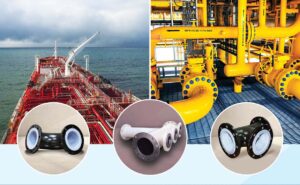Corrosion is the deterioration of metal caused by an electrochemical reaction with its surroundings and reverts to a more chemically stable state. The iron in the steel pipe or other pipeline trappings oxidizes as a result of this reaction. Metal loss in the pipe occurs as a result of corrosion. Corrosion can cause the steel to lose strength over time and possibly render it unable to contain the fluid if left untreated.

Internal corrosion occurs as a result of the pipeline’s internal environmental conditions. Corrosive materials are typically contaminants naturally present in the transported commodity, such as hydrogen sulfide, carbon dioxide, other chemicals, or even water.
The polymer coating may be applied for internal mitigation, which can cause a gradual and localized metal loss on the interior surface of pipeline systems, resulting in a reduction in wall thickness. This results in pipeline leakage, cracking, spitting, or rupture unless the corrosion is repaired, the affected pipe section is replaced, or the pipeline’s operating pressure is reduced. If left untreated, it can weaken the pipe where it occurs and make it more susceptible to earth movement, overpressure events, and other external stresses, increasing the risk of other types of pipeline failures.
MONITORING INTERNAL PIPELINE CORROSION
Here are few steps on how you can monitor internal pipeline corrosion
Step 1: If you are unsure whether you have internal corrosion, you can perform a quick test by creating a low spot in your system with a drip pot assembly.
Step 2: Choose your Internal monitoring method
Step 3: Flow profiling is one of the methods for monitoring locations as it predicts where water will travel and settle out of process fluids.
Step 4: Monitoring can take place horizontally or vertically and necessitates a variety of measurement methods and devices.
Internal pipeline corrosion can occur as a result of the fluid flowing through them as well as a variety of other factors. Anti-corrosive lining can be used to protect internal corrosion if the lining material does not degrade after extended exposure to the transported fluid at pipeline pressure and temperature.
Here is some way how you can prevent internal pipeline corrosion :
- Internal coating are subjected to rigorous fabrication, installation, and quality control standards during the manufacturing process. This contributes to a reduction in the occurrence of pipe and coating effects, which can lead to internal corrosion.
- Pipeline operators can control the amount of moisture and chemical content transported through their pipelines, which can aid in the prevention of internal corrosion.
- Pipeline operators must run “cleaning pigs” through their lines to remove material accumulations that can cause internal corrosion
- Pipeline operators may also inject corrosion inhibitors into pipelines to prevent internal corrosion. To ensure their effectiveness, these preventive measures are routinely monitored and tested.
Polycon Gulf Ltd is a subsidiary of Al Nasser Industrial Enterprises LLC, a well-known industrial conglomerate with operations in steel, polymers, fabrication, and industrial intermediates, and has nearly 25 years of industry experience in the GCC.

